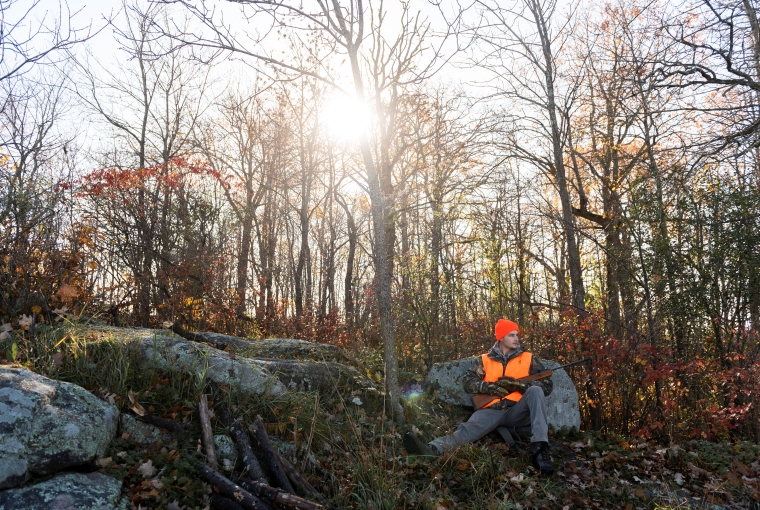
I sat with my back to a moss-flecked boulder, up on a steep ridge that bordered a vast and tangled cedar swamp. There I silently waited for the end of the hunting day. If the truth were to be told, I would have been just fine with an uneventful evening, too. I had already tagged a nice deer on a still-hunt earlier that day and had placed my own tag on another deer a short time prior during the archery season.
Still, we were party hunting and several tags were as yet unattached, so I sat in the lengthening shadows, content in the knowledge that another deer would be nice but not necessary to make this season any more memorable.
Trail watching
Like others in our gang, I was trail watching. My watch overlooked a well-worn path that led from the swamp to the fields on the plateau behind me. Many good deer had been taken there, and the history of that place and the current sign was more than enough to cause optimism. All that, however, was countered by a little voice in my head that asked, “Just how lucky do you expect to be this season?”
A snap of a twig answered that question.
My hand tightened on the pistol grip of my lever action as I scanned the cedars below.
Suddenly, a nice little buck stepped onto the trail some 25 yards away. And when it turned broadside, I raised my .44 Rem. Mag. and shot it squarely through the lungs.
Trail watching had paid off, again.
Simple advantages
I’d bet hunters have been watching deer trails ever since the first organized hunts began. After all, it’s one of the easiest and most effective ways to hunt.
In its most basic form, trail watching is as simple as finding a comfortable spot on the ground that allows you to sit quietly and view one or more game trails, choke points (such as a beaver dam crossing), or travel corridors. Then, if all goes well, you’ll see and shoot an approaching deer before it sees you.
Success visits the trail watcher who remains still, silent, and vigilant more frequently, however. That’s because they can hear approaching deer as they drag hooves across brittle autumn leaves, or notice visual clues, such as movement in the distance. Either way, that hunter is ready for the shot.
Though helpful, a tree stand or ground blind is unnecessary. All you really need is a tree, fence, or boulder to stand behind or sit against and you are in the game. This means you slip in and out of the location with less commotion and can quickly set up if you suddenly find a well-travelled trail or an area with abundant deer sign.
Yet, as simple as trail watching appears to be, you probably know a hunter or two who consistently excels at it.
The mental game
In my experience, these hunters invariably possess a few mental qualities that give them the edge.
For one thing, they have absolute confidence in the location they choose to watch over. This is, in my opinion, the foundation of their success.
You see, a good trail watcher will not just sit in any spot. Instead, they will scout beforehand and choose a location based on encouraging amounts of trail-camera images or deer sign. Even if they’re going to watch a traditional trail that has paid off every year, they’ll confirm it is still being used before committing to that location. These hunters don’t tag out every year by wasting time in unlikely locations.
Once they choose their watch, they put thought into the upcoming ambush. They’ll find an ideal location to cover the trail that provides good shooting lanes, concealment, and maybe even a stable rest for shooting. Where I live in central Ontario, a big boulder often fits the bill. The hunter will capitalize on wind direction and have an understanding as to why and when deer are using the area, too.
All these little things provide good reason to remain positive and alert throughout the hunt. It’s easier to be patient and confident when you know deer are likely to pass by. And when you’re patient and confident, you hunt better.
These are probably the most important traits.
Long ago, a more experienced hunter told me, “If you wait here and watch that spot all week, eventually, you’ll shoot a deer.”
Confidence in location
That turned out to be true, though I didn’t have to wait an entire week. A good trail watcher is quite willing to gamble on that old adage, if they have confidence in the location.
My friend Brent McPhee, who I hunted with years ago, was inspirational in that sense. He was the kind of hunter who was first out of camp in the morning and last into camp each night. He’d paddle a canoe across the lake in the dark to set up over a distant runway that he had unshakable faith in. He’d stay out all day watching it, returning only when legal shooting ended. Sometimes it would take three or four days, but eventually Brent would paddle back to camp with a nice buck weighing down the bow.
He always had his eye on the prize. He knew what he was there for and was willing to be patient and work hard to get it.
Almost as soon as dinner was done in camp, he’d prepare for the next day by making a lunch, gathering appropriate clothes, and choosing a good paperback to keep him occupied while he waited. More importantly, he truly enjoyed just being out there. Any buck he came home with was a bonus. If you’re going to watch trails for hours on end, that kind of positive attitude is an invaluable asset.
Stand discipline
If there is one major misconception about trail watching, it’s that it’s easy. I’ve heard people say, “There’s nothing to it. You just stand there and wait for a deer to show up.” There’s no doubt that happens on occasion, but if you constantly fidget, check your phone, daydream, or fall asleep, it happens a lot less.
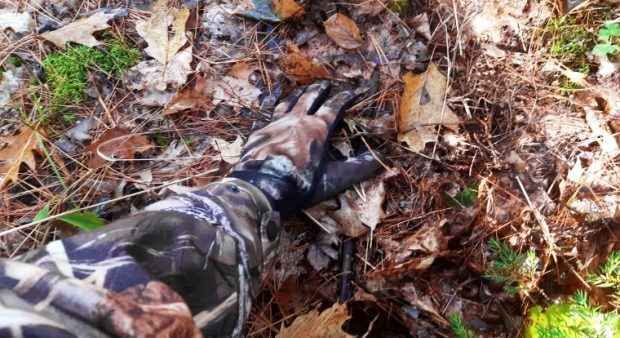
The truth is a successful trail watcher needs to exercise an incredible amount of discipline. After all, they are setting up right in the core of a deer’s territory.
Discipline, in this case, is required to keep movement and noise to the bare minimum. Ideally, that means moving only your eyes while swivelling your head slowly to scan the area. This is augmented by listening intently for any indication that a deer is approaching.
For most of us, staying that still and intensely focused is difficult to do for more than an hour at a time. I find having a routine in place helps.
Listening to the woods
Typically, I’ll scan the area I’m watching about once every minute or two. Between those visual searches, I’ll set my head back on whatever I’m sitting against, enjoy nature and listen intently to the woods. While this sounds suspiciously like goofing off, let me just say I almost always hear a deer before I see it.
I’ll try to maintain my watch-and-listen routine for at least 30 minutes at a time before rewarding myself. Often this means wiggling my toes and fingers, shrugging my shoulders, and rotating my head — basically any small movement that gets blood moving. Small movements are important. You don’t want to be flailing your limbs while deer are in the area.
In that break time, I might also take a sip of water or have a snack if I’m hungry. This is generally done while remaining seated and after I’ve had a good look around to confirm there are no deer in sight.
Comfort is key
I do this because it’s easier to sit still for long periods if you’re comfortable — and you can’t be comfortable if you’re hungry, thirsty, or have numb feet or a stiff neck. Comfort is also why it’s important to carefully choose a location, dress appropriately for the weather, and bring a hunter’s seat, stool, or folding chair if possible. The latter is more important than you think — sitting on bare, damp ground is not conducive to keeping still.
I keep referring to sitting but some trail watchers prefer to stand because this allows a better vantage point and more options if you have to react. The problem is that standing is more tiring and it gets harder to stay still over long waits. Sometimes the best solution is to alternate standing and sitting. So long as you’re still, quiet, and attentive, it doesn’t matter.
Stand discipline also demands a high degree of mental focus, which means paying close attention to your surroundings and not disregarding anything that could be a deer. I once was in my stand for two hours before I noticed that a doe was bedded a mere 75 yards away. I only noticed her after paying closer attention to a movement that turned out to be a flick of her ear. Even then I had to watch for a minute to actually make out her form. Since I had a very good vantage point to her location and would have noticed her approach, I figure she had been there the whole time.
On the plus side, that also confirmed that I had slipped into my stand quietly. That’s another thing worth noting: a noisy approach can destroy any chance you have that day.
In the moment
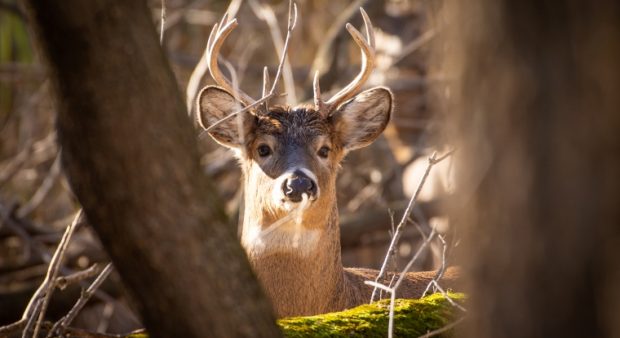
Lastly, good stand hunters do not turn their minds off or dawdle into daydreams. They plan ahead. During those uneventful moments on the watch, they’ll play out scenarios in their minds so that they’ll have a rough plan of action when a deer shows up. They’ll answer questions, things like, “What’s the maximum range I’ll take a deer at?” or “When is the best time to raise my rifle if it comes up from the valley?” or “What can I use for a rest?” and so forth.
In the end, trail watching is like any other form of hunting — long bouts of inactivity punctuated by moments you’ll remember the rest of your life. The difference is it’s simpler. All you need do is settle into the woods, have faith, and wait.
Originally published in the Nov.-Dec 2019 issue of Ontario OUT of DOORS magazine


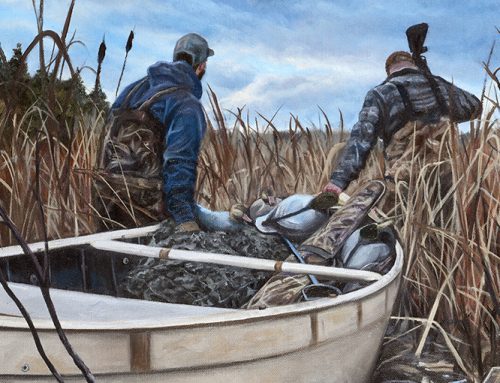

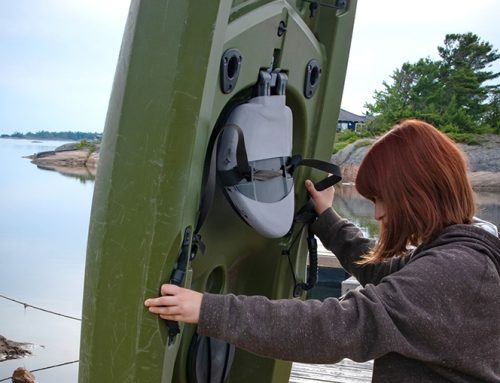

Leave A Comment